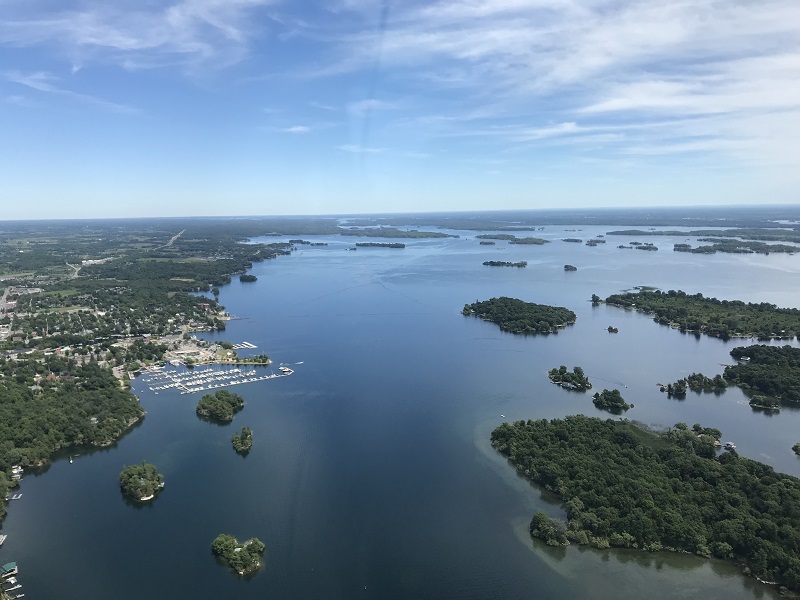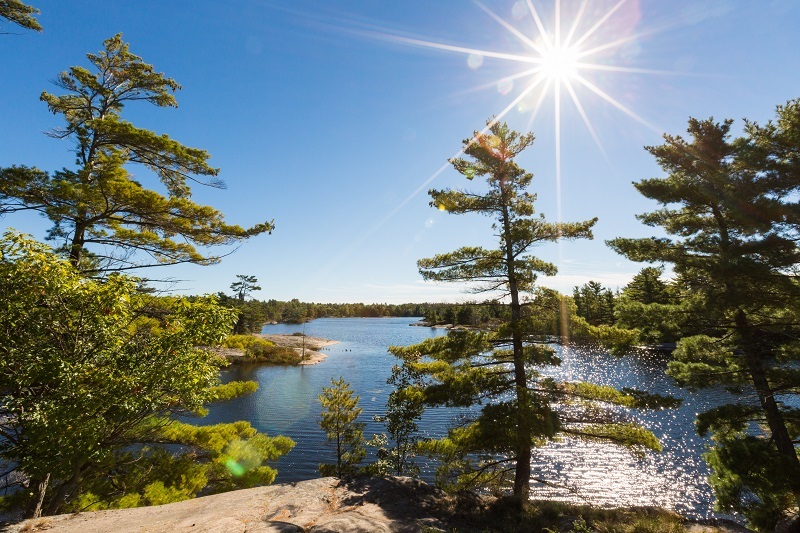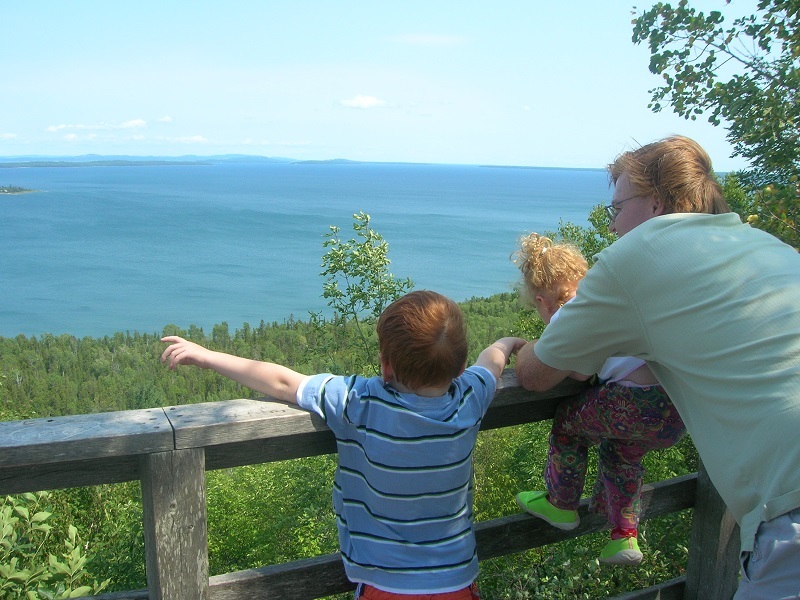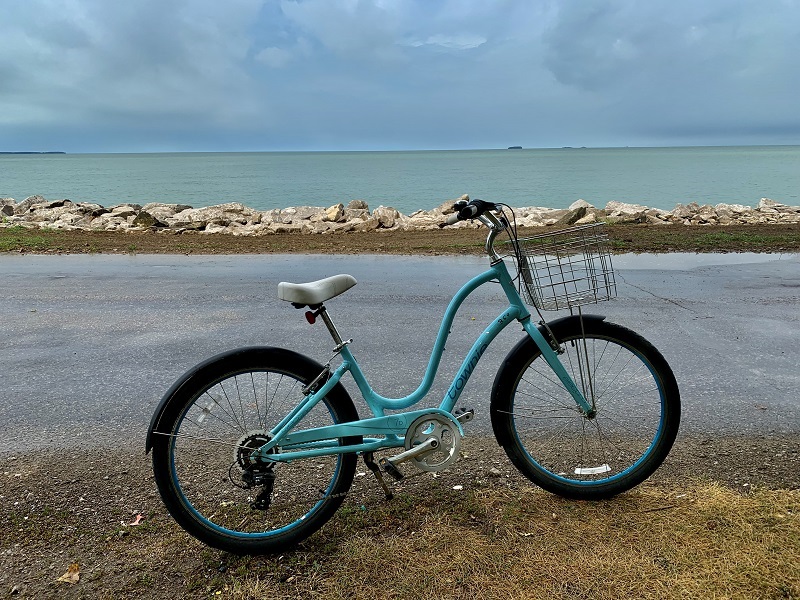“Islomania is a rare affliction of spirit,” wrote author Lawrence Durrell in 1953. “There are people who find islands somehow irresistible…and fills them with an indescribable intoxication.”
While I wouldn’t call myself an islomaniac, there is something special about islands. Their separation and disconnection draw us in and invite us to relax, enjoy their beaches, listen to the sound of the waves and live life at a slower rhythm if only for a few days.
With archipelagos like the 30,000 islands in Georgian Bay and the 1000 Islands in the east, as well as the largest freshwater island in the world, Ontario has no shortage of destinations if you happen to share Durrell’s affliction. Here are just a few to escape to this fall:
1000 Islands
Why go? Located in southeastern Ontario, where Lake Ontario meets the mighty Saint Lawrence River, this archipelago has 1864 islands that straddle the Canadian/US border. What actually constitutes an island though is a matter of debate with Americans considering a one-square-foot piece of land with one tree an island and Canadians maintaining that a one-square metre and two trees were necessary to qualify. But what difference do semantics make when it’s all just incredibly scenic? This UNESCO-recognized, glacially-sculpted landscape combines hardwood and pine forests, rocky outcrops and cliffs all surrounded by glittering waterways.

1000 Islands Photo Credit Jennifer Merrick
What to do? Get out on the water with an excursion by 1000 Island Kayaking that will have you paddling among these isles, spotting wildlife and discovering historical attractions. McDonald Island, one of 20 run by Parks Canada, has docks and camping sites, including oTENTiks, roofed accommodation with BBQs, picnic tables and heaters. Hike its perimeter or use it as a base camp to explore surrounding islands.
[COVID note: campsites and trails are open, but the oTENTiks are not available on the islands, though the ones at Mallory’s Landing on the mainland are, as at Sept 2020]
Georgian Bay Islands
Why go? If you think 1864 islands were are a lot, try over 30,000 here on the world’s largest archipelago. Parks Canada stewards just a fraction of them, 63 to be exact, at Canada’s smallest national park, the 14-square kilometre Georgian Bay Islands National Park. What it lacks in size, it makes up for in grandeur with the granite rocks of the Canadian shield, deep blue waters and windswept pines that inspired the Group of Seven artists who painted its landscape.

Fairy Lake. Photo Credit Jennifer Merrick
What to do? The Cedar Spring Visitor Centre on Beausoleil Island offers bike rentals, so you can circle the island on its paths that showcase its remarkable diversity. Hikes range from the short 1.5km Lookout Trail with views of the bay 210 metres above sea level to a mysterious Fairy Trail that passes Goblin and Fairy Lakes (the story that inspired the names you’ll have to discover yourself). Go for the day or camp overnight at one of the 120 campsites, including roofed accommodations. Transportation on the Park Canada Daytripper boat needs to be booked in advance.
[COVID note: The campsites and visitor centre are open; however, there is no transportation, so visitors need to make private arrangements with water taxis or their own boats. The oTENTiks are also not available for the duration of the 2020 season.]
Manitoulin Island
Why go? Growing up in Northern Ontario, we always referred to Manitoulin simply as ‘The Island’. Located on Lake Huron, it’s the largest freshwater island in the world with more than 100 lakes within it. Some of those lakes have their own islands, so theoretically you can even stay on an island on an island. Manitoulin’s name means ‘Spirit island’ in the Anishnaabeg language, and it truly casts a spell on those who visit with its escarpment landscape of sculpted limestone cliffs and waterfalls, wildflowers and a rich cultural heritage.

Manitoulin Island. Photo Credit Jennifer Merrick
What to do? Hike the Cup and Saucer Trail, which features dramatic 70-metre cliffs and jaw-dropping vistas, and visit waterfalls like Bridal Veil Falls and High Falls. Misery Bay Provincial Park does not live up to its name with trails that take you through stands of mixed forest and old glacial beaches. Gordon’s Park Campground was the first commercial privately-owned dark-sky preserve, which means beautiful night skies with opportunities to see the Milky Way in all its glory and maybe even the Aurora Borealis.
Pelee Island
Why go? Located on the 42nd parallel, the same latitude as Rome and Barcelona, you simply can’t go any farther south in Canada than this beautiful island. Its southern clime not only means the longest frost-free season in the province but also unique flora and fauna like the prickly pear cactus, native coffee trees and the rare blue racer snake. Bird watchers flock here in spring to spot the more than 350 specimens that stop here on their migration south. Tourists converge in the summer months to enjoy the beaches, winery and the pace of life.
[COVID note: the winery is currently closed]

Pelee Island Photo Credit Jennifer Merrick
What to do? With mostly flat routes that take you along the scenic shoreline of Lake Erie as well as through the Carolinian forest, biking is a popular activity on the island (rentals are available from Comfortech located close to the ferry docks). A hike at the Fish Point Nature Reserve showcases some of the islands botanical riches and leads down to its southernmost point. Don’t be surprised if your cell phone thinks you’re in the US! At the opposite end of the island is Lighthouse Point, where the restored 1833 watchtower stands stoically on the natural beach strewn with white, sun-bleached driftwood and stones perfect for skipping. The Mission Hall Project is a sanctuary built as a testament to Pelee’s ‘healing embrace’ and reminds us that ‘divinity in nature is there for the taking’. It’s a message that personally I think rings even truer on an island.
Perhaps I am somewhat of an islomaniac after all?



